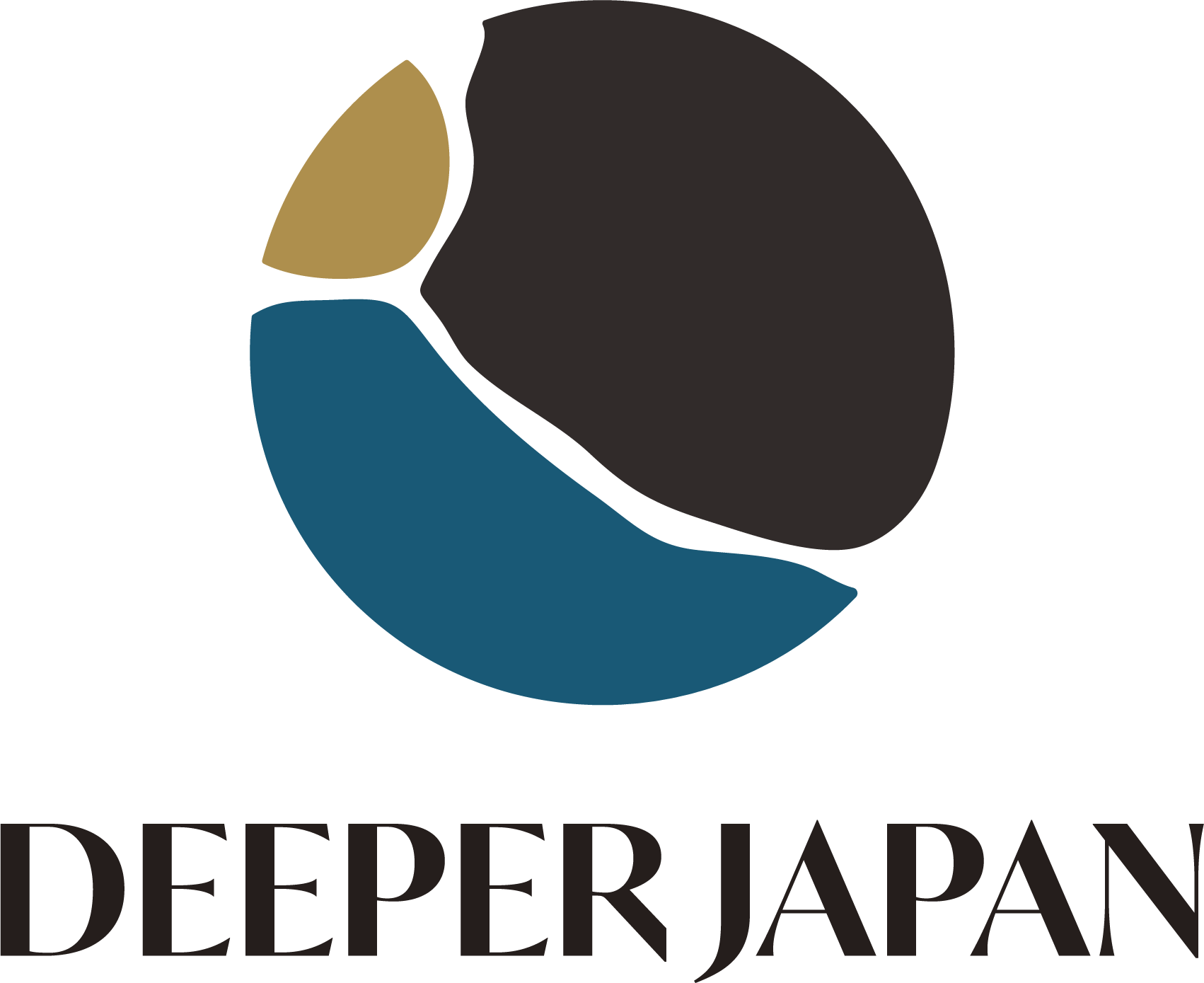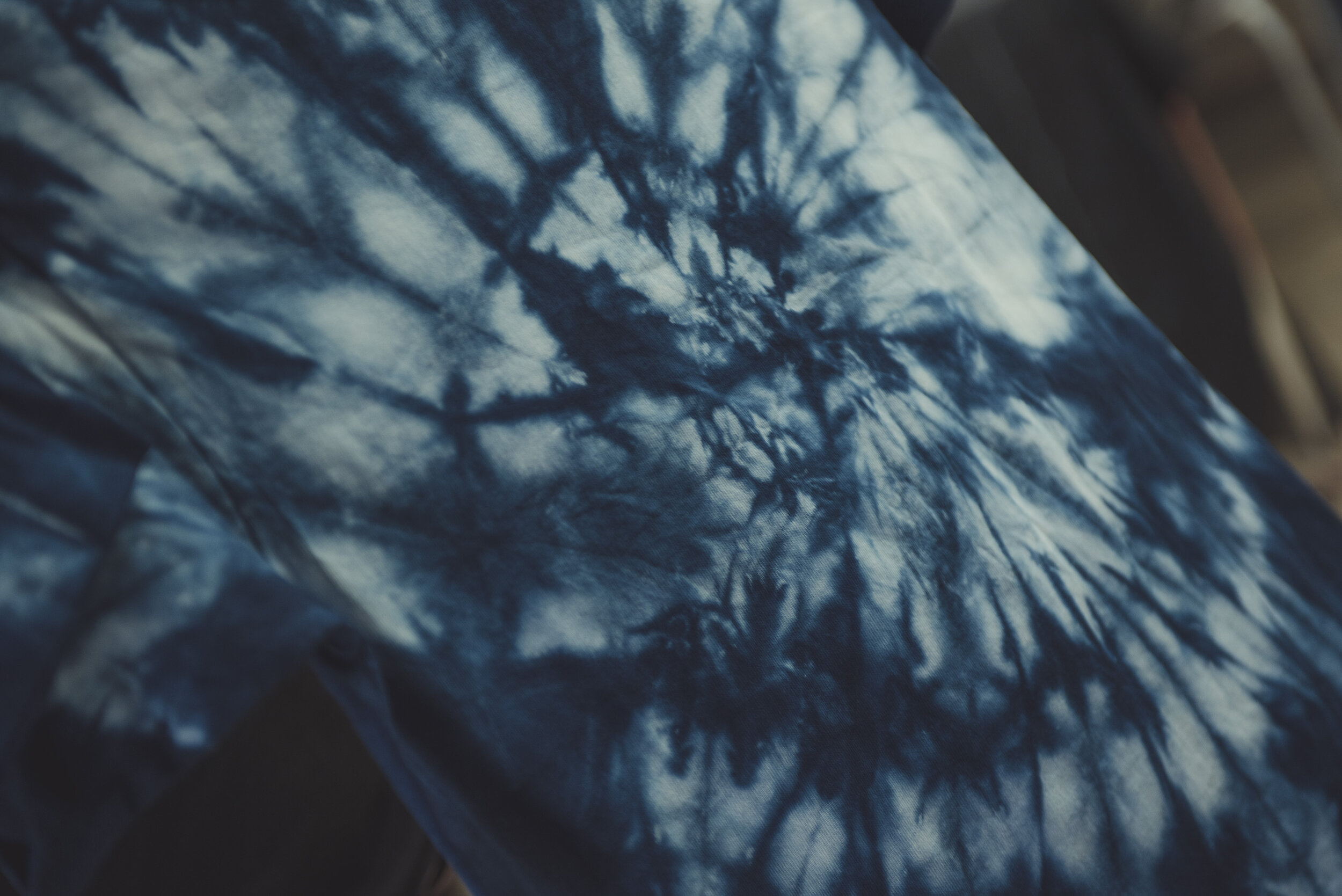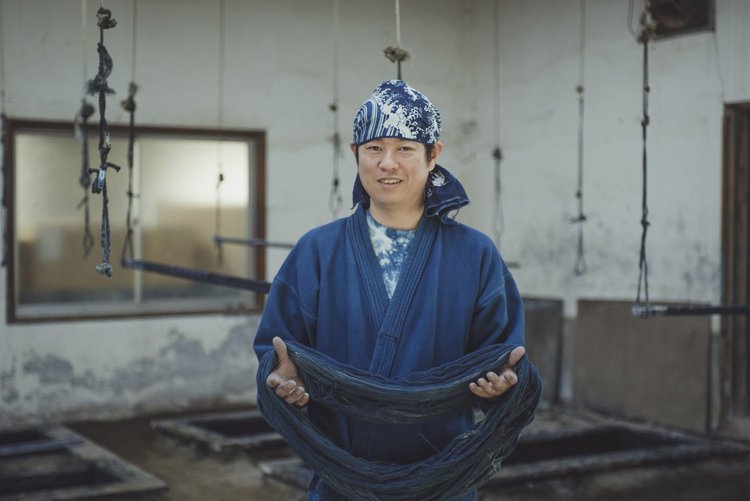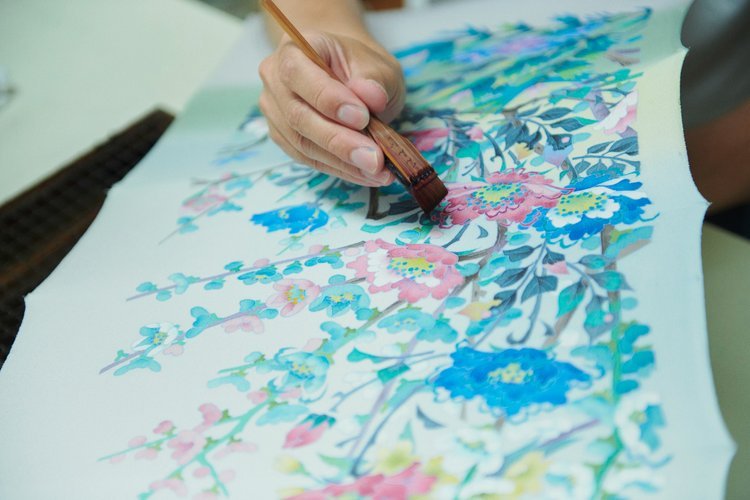Daigo, Aizome Master
“You cannot produce this kind of blue through chemical dyes. Yes, it’s blue in a conventional sense but this aizome blue is not a singular color. It looks as if there are natural earthy tones intermingled, and this multicolored balance is what fuels my passion.”
Hanyu, a city in Saitama prefecture, has been historically known for indigo dyed products and sustained an environment suitable for ai (indigo plant) cultivation. This dates back as far as the Edo period. The success and popularity of such traditional crafts has unfortunately declined, but Hanyu is still relatively active in terms of crafts and tradition. In this city lives Daigo, a talented craftsman who has lived an aizome-centric lifestyle for the past 20 years. Daigo was born and raised around the Hanyu neighborhood, and from a young age he knew of the master that ran the Nakajima dye factory that was established in 1837. This master Yasuo Nakajima, was named as a Saitama prefecture Intangible Cultural Asset by the Agency of Cultural Affairs, under the Japanese government. Surrounded by such talent, Daigo was exposed to aizome (indigo dyeing) from a young age. As a result, he was aware of the population’s decreasing interest in these arts, and how wasteful it would be to allow such immense talent and history disappear. With this realization, he decided to apprentice under the master and learn all there is to know about aizome.
Hand dye your own “Japan blue” t-shirt and scarf in Hanyu, a city famous for its indigo
The main bulk of Daigo’s factory works on dyed yarn that is eventually used to make Kendo wear (or Gi, as it is called in Japanese). This production accounts for approximately 70% of the work, while the rest is for clothing and miscellaneous items, like T-shirts, scarves and handkerchiefs. Let’s explore the tradition of aizome a little further, and learn about what makes this so timeless. Ai refers to indigo and the dye is extracted from the indigo plant leaves. The leaves are dried and fermented for several months before they can be used for dyeing. The leaves of Japanese indigo plants produce beautiful shades of deep blue. The fermentation process of the the leaves changes the depth of color. When it was first introduced in Japan, it was used exclusively for aristocrats and samurai; as time went on, it was integrated into the Japanese lifestyle and aizome was used for kimonos, bedding, towels and other household items. On top of its beautiful shade, aizome makes the fabric more durable and gives it insect repellent, antibacterial, deodorant and UV blocking properties. These qualities also help with some dermatological issues.
We asked Daigo about his motivations for joining the aizome business. His answer, simply put, is the color: he loves the indigo shades and his eyes almost twinkle as he speaks about his job. Daigo fervently says, “You cannot produce this kind of blue through chemical dyes. Yes, it’s blue in a conventional sense but this aizome blue is not a singular color. It looks as if there are natural earthy tones intermingled, and this multicolored balance is what fuels my passion.” He wants to spread the art and history of aizome, but he wants more Japanese people to become aware of his passion. Of course he wants people all over the world to know the importance and beauty of aizome, but also worries that sometimes we put too much international emphasis and overlook the importance of reaching to a closer, more local audience.






